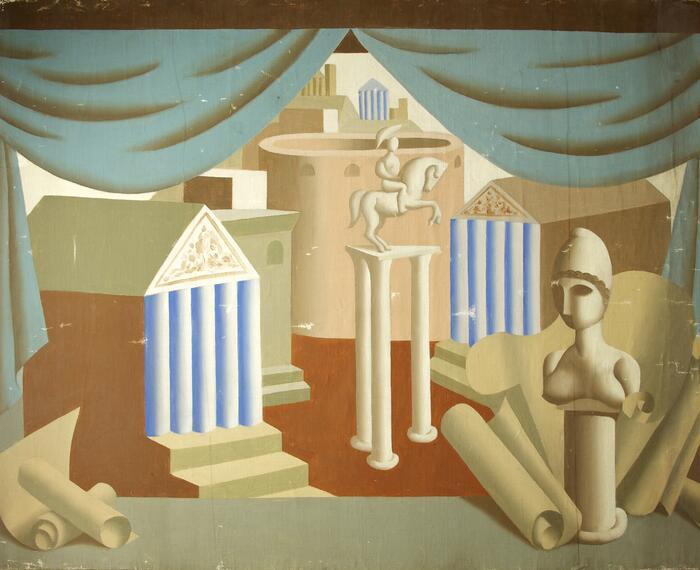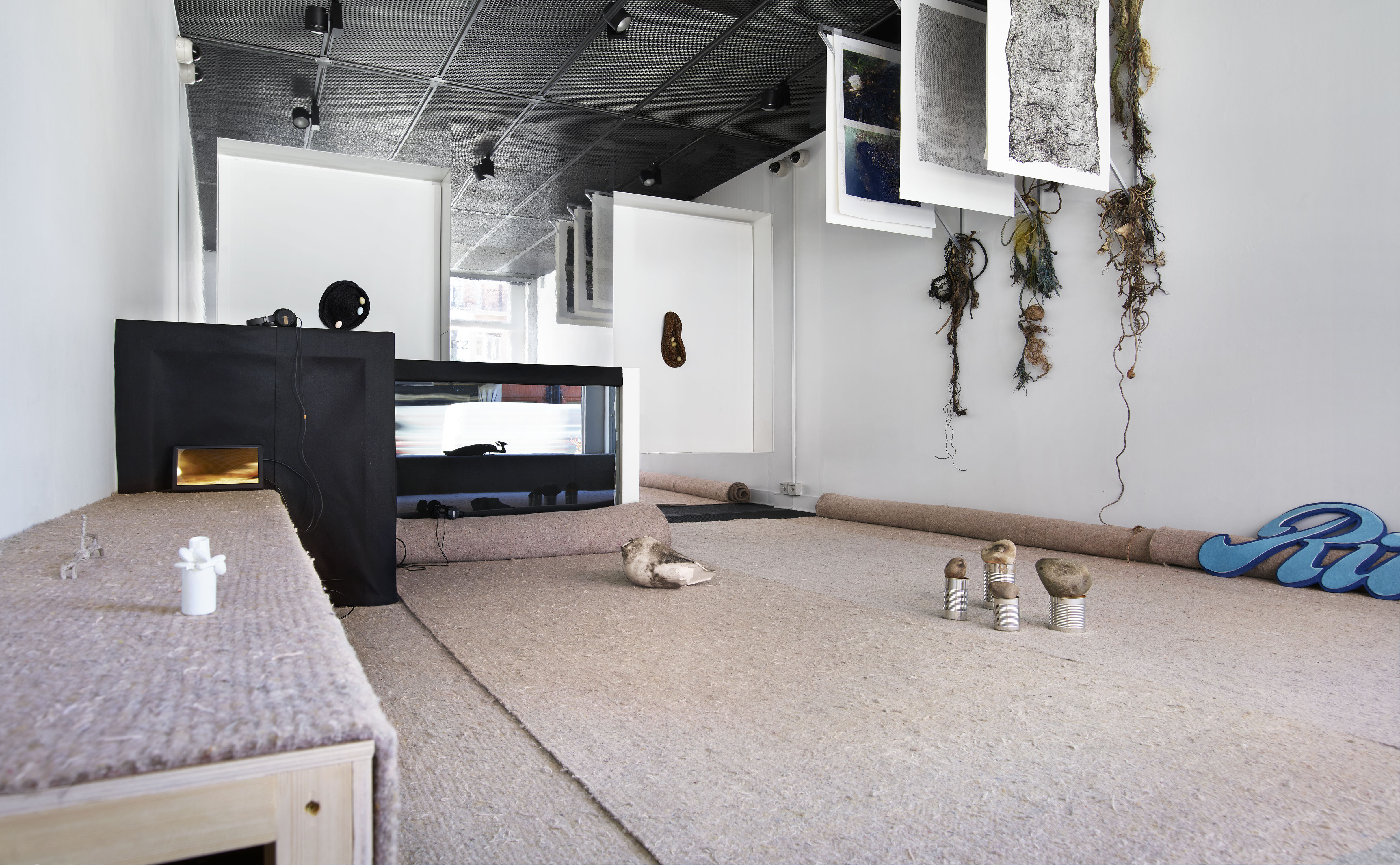


'Beuys Open Source' brings together different artworks subtly linked to Joseph Beuys, the German conceptual artist and radical thinker born in 1921. Last year a number of events celebrated the centenary of this artist. Of particular interest was a series of podcasts that think about Beuys globally. 'Beuys Open Source' inserts itself into this wealth of activities, offering a good starting point to engage with a historical artist in a non-linear way.
The connections between the artists exhibited and Joseph Beuys are not always explicit, nor does the exhibition want to be a selection of artists that were inspired by Beuys. Some of them have never even heard of the German artist before. Yet all the exhibited artists bring in very specific connections to Beuys and to each other. Laying felt carpet on the floor of the gallery, the exhibition designer Veljko Marković transforms the space into an intimate environment, a space for rituals and discussions. This brings the viewer close to the poetics of both the artists exhibited and to Beuys.
Felt was of particular interest to Beuys who served in the German Air Force in the Second World War. Beuys’ plane was shot down in Crimea and he was saved by nomadic Tartar tribespeople who, allegedly, enveloped his wounded body in animal fat and felt. These materials remain emblematic in Beuys’ production. In turn, Marković’s installation envelops Beuys, the works exhibited and the audience into a whole.
Rafael Peréz Evans takes the idea of warmth by situating heated stones in the middle of the gallery. Can and Stone, Thermos (Thames), 2021 is a sculptural assemblage that comprises stones from the Thames that can, as the artist explains, “temporarily heat the hands and the bodies of people convened in space. As people gather around the assemblage, passing the stones between one another, they share the labour of maintaining this heating system”. Passing the stones suggests a metaphor for caring for each other, an important reminder now more than ever. Perez Evans’ work also embodies methods of social interactions that were important to Beuys.
Experimentations with materials, crucial to Beuys, are also at the core of some of the practices of the artists exhibited. A running chocolate fountain sculpture The Fluidity (The art is better when it is edible), 2021 by Steph Huang takes an ironic look at Beuys’ use of fat. Huang uses a common link to how chocolate can have a positive effect on us, its transformative nature both literal and emotional.
A series of large photographs hang on the right-hand wall. Susanne Kriemann’s installation, Mngrv (nylonsnoon), 2021 comprises various elements including aluminium and rope collected from a mangrove habitat. The artist names the new material ‘mngrv’, “neither rope nor root, nylon nor plant; Mngrv is a material witness to the intertidal processes” that happen globally. In this case plastic waste found in Sri Lanka which actually came from the EU. Kriemann’s project also supports the mangrove movement in Indonesia in a circular exchange of objects and materials. Two sculptures by Dan Coopey hang at the back of the gallery. These are hand woven baskets that carefully hold fragile eggs, exemplifying the dichotomy of how hard and soft materials can coexist together. Dan Coopey has extended his own invitation to participate in 'Beuys Open Source' to some Brazilian based artists. Transforming the famous action of Joseph Beuys “I Like America America likes me” into a South American invitation Coopey reshapes the concept of hospitality.
Mikael Brkic’s sculpture Riva Bar (Felt), 2021 refers to the Croatian island of Iž in the Zadar archipelago. The area was part of Yugoslavia, went through several changes and now has a community of Swiss Slovenian Croatian “farmers/artists/therapists/carpenters” living on the island. Brkic stayed with them as they are very interested in Beuys’ “social sculpture”, a term he used to think about art and how it shapes and structures society. Brkic brings to London a felt sculpture that is modelled on the design of an old sign from a bar on the island, the Riva Bar. The local bar took the sign off in a process of regeneration that aims to keep local gangs out. Brkic links the communal histories around this gathering place with his personal experience of what it means to take distance with one’s past.
There is a strong spirit of collaboration throughout the show. As the press release notes “it was through the sculpting of human relations that Beuys sought to enable a shift in our reality-system”. The exhibition seems to have sculpted these different relationships into the space of Belmacz. The artists, the gallery and the audience are held together –as the felt on the floor reminds us – in a circular connection. Artists and people can have such a powerful effect on each other, as Beuys knew. As Beuys symbolised a generation’s hope for a different society, the artists in the exhibition stand for a renewal of the power structures in society, and a call to rethink the art world they operate in.
Ilaria Puri Purini
Curator of Programmes
Artists exhibited: Carla Åhlander, Mikael D. Brkic, Dan Coopey, Rafael Pérez Evans, Laura Ní Fhlaibhín, Johanna M. Guggenberger, Steph Huang, Daniel Huss, Susanne Kriemann, Elisabeth Molin, Joel Tomlin, and Abbas Zahedi.
Belmacz, 45 Davies Street, London W1K 4LX.
Open Monday-Friday, 10.00-18.00. Exhibition continues until 18 March 2022 www.belmacz.com